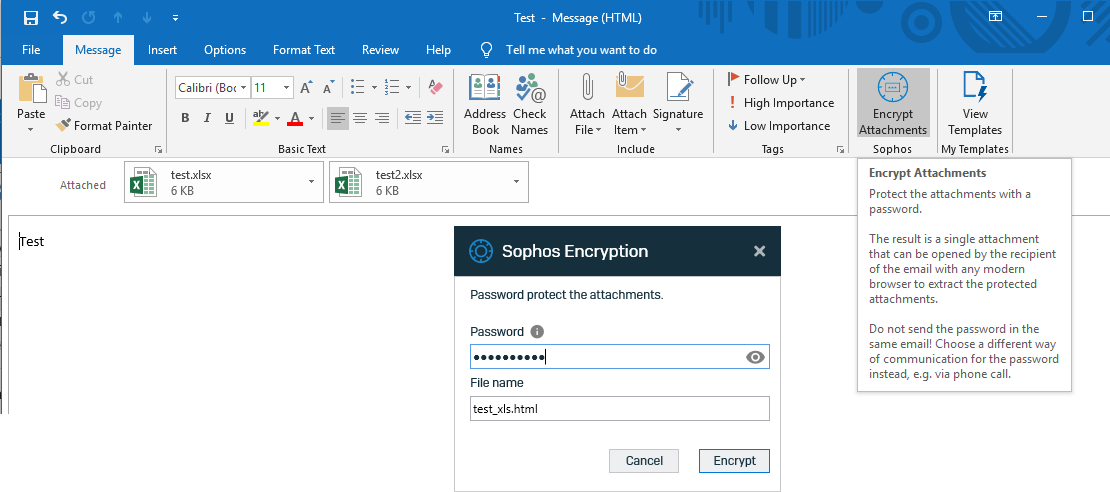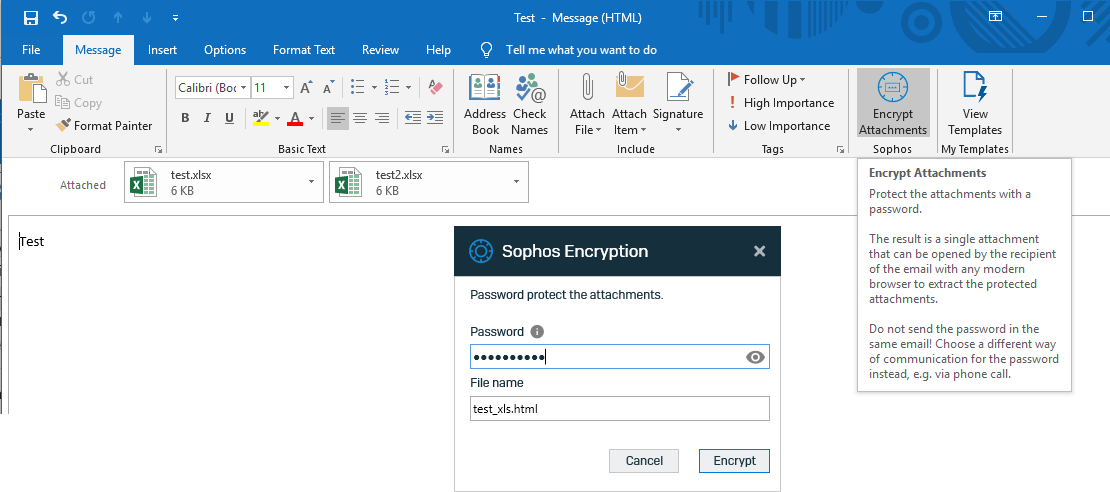The following was written by Peter Craig, Sales Engineer Ireland and Channel Islands at Sophos.
Something I’ve found partners are often unaware of, but when shown see great value in, are the new file encryption features available in Sophos Central Device Encryption (CDE).
By enabling simple secure document sharing, your customers users can encrypt Outlook attachments and documents before sharing them with internal or external colleagues – all included as part of their existing CDE license.

You can enable these features in the encryption policies. Using Enable right-click context menu puts the Create password-protected file option in the right-click menu of files. Files are wrapped in a new HTML file with encrypted content.

Recipients can open the file by double-clicking it and entering the password. They can send the received file back and protect it with the same password or a new one, or they can create a new password-protected file, even without Sophos CDE installed.

Enabling the Outlook Add-In adds encrypting email attachments to Outlook. Users can protect attachments by selecting Protect Attachments on the Outlook ribbon. Again, all unprotected attachments are wrapped in a new HTML attachment with encrypted content and the email is sent.

Additionally, you can choose Always ask how to proceed with attached files.

If you activate this option, users are prompted to choose how to send attachments whenever the message contains one. They can send these attachments password protected or unprotected.
You can also enter excluded domains for which the Always ask how to proceed with attached files option does not apply. For example, this can be the domain of your organization. If recipients belong to this domain, the senders are not asked how they want to handle attachments.
Get simple, secure document sharing with Sophos Central Device Encryption.